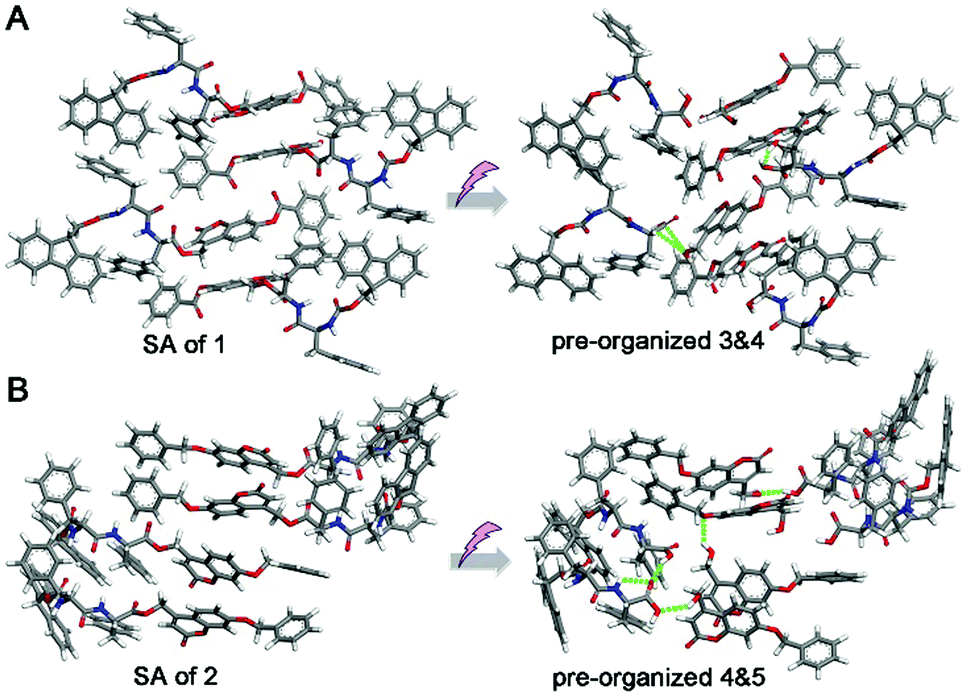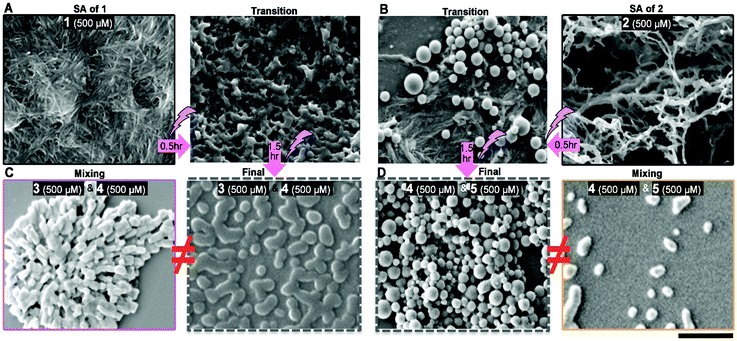FY2016 Annual Report
Full Unit Name
Assistant Associate Professor First Last
Abstract
Hydrogels are soft materials with distinct three-dimensional (3D) networks capturing large water content. The similarity of hydrogels to natural tissue has made them the most promising biomaterials for use in human bodies. During the past several decades, hydrogels have attracted considerable attention from scientists in different research fields. With their contributions, the research in this field has experienced significant advances both in content and in style. Organometallic hydrogels, one special category of hydrogels in which metal ions participate in the 3D network, have become one of the pioneering types of soft materials. Endowed with the unique properties of metal ions and coordination chemistry’s structural diversity, this type of material has shown great potential for intelligent materials as part of a smart future.
1. Staff
- Dr. Guanying Li, Postdoctoral Fellow
- Dr. Enming Du, Postdoctoral Fellow
- Dr. Yunhui Zheng, Postdoctoral Fellow
- Sona Roy, Graduate Student
- Shijin Zhang, Graduate Student
- Xiaolei Fu, Intern Student
- Xunwu Hu, Intern Student
- Wei Ji, Intern Student
- Nehing, Intern Student
- Hitomi Shinzato, Administrative Assistant
2. Collaborations
2.1 Co-Organizing Synthesis of Heterogeneous Nanostructure through Photo-Cleavage of Pre-Stabilized Self-Assemblies
- Description: We devised a co-organizing synthesis by targeting metastable assemblies. Applying a photo-cleavage reaction to the pre-stabilized self-assembled nanostructures, we could successfully place physical constraints on the initiating stage of the molecular co-assembly (CA) process for exotic nanostructures that are away from the thermodynamic minima.
- Type of collaboration: Joint research
- Researchers:
- Professor Chuanliang Feng, Shanghai Jiao Tong University
3. Activities and Findings
3.1 Subsection Title If Necessary
Please use Header 3 or H3 to make subsections of the "Activities and Finding" section, which are H2. How you organize this section is up to you.
When you copy-paste text, use Shift-Ctrl-V on Windows and Shift-Cmd-V on Mac OR use "Paste from Word" from the toolbar.
DO NOT PASTE images directly into the editor. Use the Image icon, upload the file, and then link the image file.
You can use "Insert Template" (the Gear icon in the toolbar) to insert figures with captions such as Figures 1 and 2 below. Just try the different layouts. Double-click to replace the image placeholder.

Figure 1: Energy profile of a co-organizing synthetic pathway that targets metastable CAs for exotic heterogeneous nanostructures. SA is short for self-assembly, and CA is short for co-assembly.

Figure 2: (A) The model structure transitions from SA of 1 to the pre-organized 3 & 4 after photo-cleavage. (B) The model structure transitions from SA of 2 to the pre-organized 4 & 5 after photo-cleavage. The green dotted lines represent intermolecular hydrogen bonding.
The third image, Figure 3, is a single image with the caption below it.

Figure 3: (A) SEM images of self-assemblies of 1, at 500 μM in H2O/DMSO (v/v = 3![[thin space (1/6-em)]](https://www.rsc.org/images/entities/char_2009.gif) :
:![[thin space (1/6-em)]](https://www.rsc.org/images/entities/char_2009.gif) 2), and the transition state of photo-cleavage of SA of 1. (B) SEM images of self-assemblies of 2, at 500 μM in H2O/DMSO (v/v = 3
2), and the transition state of photo-cleavage of SA of 1. (B) SEM images of self-assemblies of 2, at 500 μM in H2O/DMSO (v/v = 3![[thin space (1/6-em)]](https://www.rsc.org/images/entities/char_2009.gif) :
:![[thin space (1/6-em)]](https://www.rsc.org/images/entities/char_2009.gif) 2), and the transition state of photo-cleavage of SA of 2. (C) SEM images of 3/4 mixture at 500 μM each in H2O/DMSO (v/v = 3
2), and the transition state of photo-cleavage of SA of 2. (C) SEM images of 3/4 mixture at 500 μM each in H2O/DMSO (v/v = 3![[thin space (1/6-em)]](https://www.rsc.org/images/entities/char_2009.gif) :
:![[thin space (1/6-em)]](https://www.rsc.org/images/entities/char_2009.gif) 2) obtained from mixing or photo irradiation (320 nm) of SA of 1. (D) SEM images of 4/5 mixture at 500 μM each in H2O/DMSO (v/v = 3
2) obtained from mixing or photo irradiation (320 nm) of SA of 1. (D) SEM images of 4/5 mixture at 500 μM each in H2O/DMSO (v/v = 3![[thin space (1/6-em)]](https://www.rsc.org/images/entities/char_2009.gif) :
:![[thin space (1/6-em)]](https://www.rsc.org/images/entities/char_2009.gif) 2) obtained from mixing or photo irradiation (320 nm) of SA of 2. Scale bar of SEM is 1 μm.
2) obtained from mixing or photo irradiation (320 nm) of SA of 2. Scale bar of SEM is 1 μm.
4. Publications
4.1 Journals
- Yunhui Zheng, Guanying Li and Ye Zhang.* "Organometallic Hydrogels" ChemNanoMat, 2016, 2, 364-375.
- Guanying Li, Toshio Sasaki, Shunsuke Asahina, Michael C. Roy, Toshiaki Mochizuki, Koji Koizumi and Ye Zhang.* “Patching of Lipid Rafts by Molecular Self-Assembled Nanofibrils Suppresses Cancer Cell Migration” Chem. 2017, 2, 283-298.
- Wei Ji, Shijin Zhang, Gerogy A. Filonenko, Guanying Li, Toshio Sasaki, Chuanliang Feng* and Ye Zhang.* "Co-Organizing Synthesis of Heterogeneous Nanostructure through Photo-Cleavage of Pre-Stabilized Self-Assemblies" Chem. Commun. 2017, 53, 4702-4705.
4.2 Books and other one-time publications
Nothing to report
4.3 Oral and Poster Presentations
- Zheng Yunhui; Zhang, Ye. Enzyme-triggered self-assembly of small molecules inducing emission and its application for living cells, 97th CSJ annual meeting, Yokohama, Japan , 3/16-3/19 (2017).
- Ji, Wei; Zhang, Ye. Coassembly of Unbinding Molecules into Particles Driven by Photocleavage of Self-assembled Nanofiber. 97th CSJ annual meeting, Yokohama, Japan , 3/16-3/19 (2017).
- Li, Guanying; Zhang, Ye. Self-assembly on lipid rafts mechanically suppresses cancer cell migration. 97th CSJ annual meeting, Yokohama, Japan , 3/16-3/19 (2017).
- Du, Enming; Zhang, Ye. Taurine Modified Ru(II)-Complex Target Brain Cancer Cell for Photodynamic Therapy. 97th CSJ annual meeting, Yokohama, Japan , 3/16-3/19 (2017).
- Zhang, Shijin; Zhang, Ye. Dynamic Self-assembled Chiral Molecules for Active Liquid Crystalline Material. 97th CSJ annual meeting, Yokohama, Japan , 3/16-3/19 (2017).
- Cao, Dong; Zhang, Ye. Utilizing Self-assembly of oligopeptide to induce large liquid rafts formation. 97th CSJ annual meeting, Yokohama, Japan , 3/16-3/19 (2017).
- Zhang, Ye. Tie up actin cytoskeleton to suppress cancer metastasis. MRS Fall Meeting, 11/27-12/02 (2016)
5. Intellectual Property Rights and Other Specific Achievements
Nothing to report
6. Meetings and Events
6.1 Chemical approaches for deciphering protein functions in live systems
- Date: October 11, 2016
- Venue: OIST Campus Lab1 D015
- Speaker: Prof. Itaru Hamachi (Kyoto University)
6.2 Can we operate molecular machines by our hands? Hand-operating nanotechnology: World stupidest approach for energy most efficient molecular manipulation
- Date: May 19, 2016
- Venue: OIST Campus Lab3 C700
- Speakers: Prof. Katsuhiko Ariga (NIMS)
6.3 Enzyme-instructed self-assembly (EISA) as a multistep molecular process for selectively killing cancer cells
- Date: October 4, 2016
- Venue: OIST Campus Lab3 C700
- Speaker: Prof. Bing Xu (Brandeis University)
7. Other
Nothing to report.



